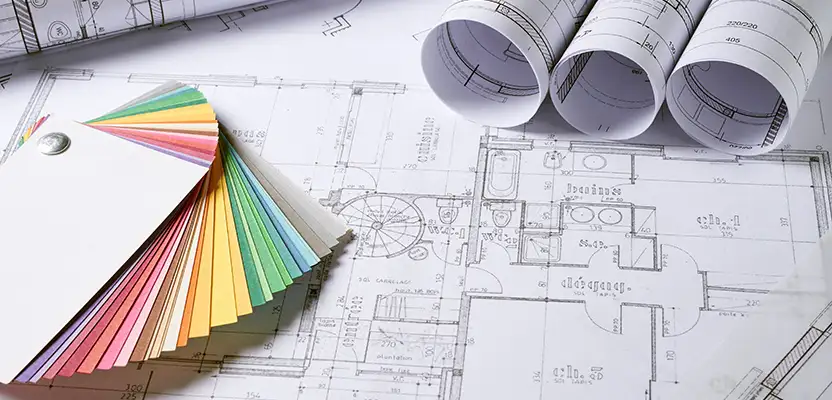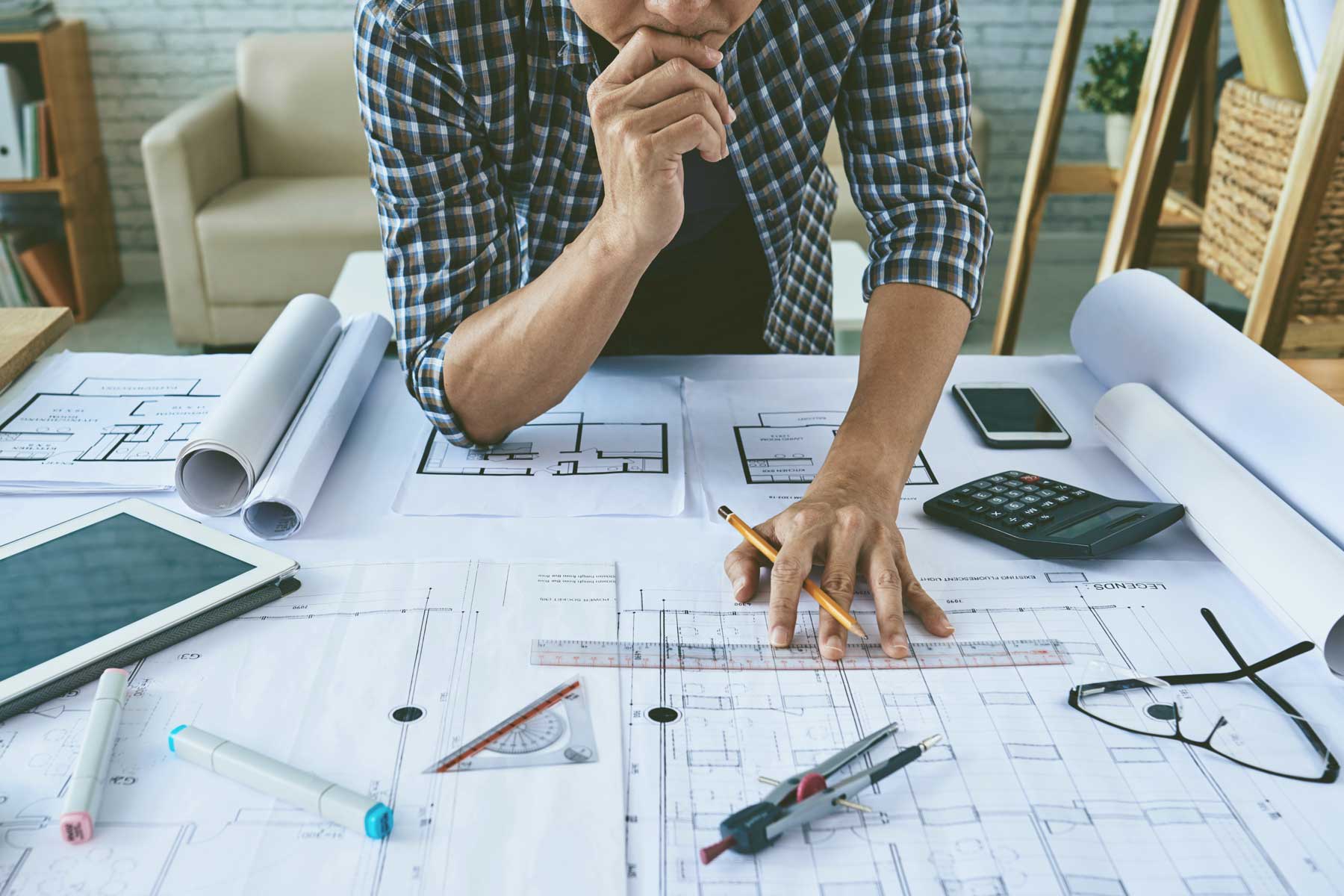Architect Design Movements to Track in the Coming Future
Architect Design Movements to Track in the Coming Future
Blog Article
Understanding the Diverse Job Paths Available for Aspiring Architect
As an ambitious Architect, you have a globe of career courses awaiting you. Each path uses unique difficulties and opportunities to apply your creative thinking and technical knowledge. Whether you're attracted to conventional style or the nuances of sustainable style, there's a specific niche that straightens with your interests. Comprehending these varied options can shape your expert trip, but which direction will you select to explore first?
Standard Design: Creating Frameworks and buildings
Standard style concentrates on developing buildings and structures that blend performance with visual allure. As you discover this area, you'll value the detailed equilibrium in between kind and objective. You'll find out to attract inspiration from historical styles, incorporating elements like symmetry, materials, and craftsmanship. Your designs can reflect cultural heritage, showcasing neighborhood practices while meeting modern demands.
You'll establish skills in preparing, model-making, and site evaluation, permitting you to picture and interact your ideas effectively. Involving with customers, you'll need to understand their vision and convert it right into possible designs.
Furthermore, constructing codes and sustainability methods are necessary in your work, guaranteeing your frameworks are risk-free and eco-friendly. As you expand in your occupation, you'll find opportunities in household, industrial, or even reconstruction jobs, each offering unique obstacles. Accepting traditional design paves the means for a satisfying career that pays tribute to the past while shaping the future.
Urban Preparation: Shaping Areas and Public Spaces
As an aspiring Architect, you can play a vital duty as a metropolitan planner, changing how neighborhoods interact and work. By using neighborhood involvement techniques, you'll assure that locals have a voice fit their environment. Plus, incorporating sustainable layout principles will assist develop spaces that not just fulfill today's needs however additionally safeguard the future.
Function of Urban Planners
While several might think about engineers as the sole enthusiasts behind structures, city planners play a crucial role fit the more comprehensive landscape of communities and public areas. They assess land use, zoning legislations, and area requires to produce lasting environments that improve lifestyle. By collaborating with numerous stakeholders, you'll aid develop parks, transport systems, and suburbs that advertise social interaction and availability. Urban organizers additionally focus on environmental factors to consider, ensuring that growths integrate green spaces and support biodiversity. Your know-how in spatial layout and area characteristics permits you to picture future development while maintaining social heritage. In this critical duty, you'll straight affect exactly how people experience their surroundings, making every project an opportunity for positive change.
Neighborhood Interaction Strategies
Effective neighborhood interaction approaches are important for metropolitan organizers to assure that the voices of residents are heard and valued in the preparation procedure. To cultivate meaningful dialogue, you should focus on open discussion forums and workshops where community members can express their concepts and issues. By proactively paying attention and integrating responses, you'll create spaces that reflect the community's demands, ultimately leading to more successful and sustainable city atmospheres.
Sustainable Design Principles
When designing metropolitan rooms, including lasting style principles is essential for producing settings that prosper both ecologically and socially. You ought to begin by concentrating on power effectiveness, utilizing materials that reduce waste and advertise recycling. Think about integrating green rooms, like parks and yards, to boost biodiversity and improve air top quality. Advertising walkability and public transport can minimize dependence on vehicles, fostering a much healthier neighborhood.
Designing with water preservation in mind is also crucial-- think of rain yards and permeable surface areas to manage stormwater. Including neighborhood participants during the preparation procedure warranties that the areas you develop meet their demands and encourage social communication. By accepting these concepts, you'll add to vibrant, sustainable urban landscapes that benefit every person.

Landscape Architecture: Producing Lasting Outdoor Settings
As you discover landscape style, you'll discover crucial layout principles that create useful and stunning outside areas. Lasting practices play a vital function in ensuring these environments prosper while decreasing ecological impact. And also, you'll locate a variety of occupation opportunities that permit you to make a real distinction in exactly how people connect with nature.
Design Concepts in Landscape
Understanding style concepts in landscape architecture is necessary for creating sustainable exterior environments that integrate with nature. You'll need to consider aspects like percentage, balance, and scale to assure your designs feel cohesive and inviting. Incorporating native plants not just improves biodiversity however also lowers water usage, making your landscape resilient. Consider the flow of room and exactly how individuals connect with it; pathways and seating locations ought to invite exploration and relaxation. Furthermore, take note of seasonal modifications, designing with products that enhance the surroundings year-round (Architect). By focusing on sustainability and appearances, you can develop exterior rooms that improve the community and advertise well-being. Accepting these concepts will certainly establish a solid structure for your profession in landscape design.
Lasting Practices Review
Sustainable methods in landscape style not only concentrate on looks but also prioritize eco-friendly health and source preservation. You can design areas that promote dirt wellness, such as utilizing natural products and practicing permaculture principles. Ultimately, these methods ensure your layouts profit both individuals and the environment for years to come.
Profession Opportunities Exploration
With a solid structure in lasting practices, landscape architecture uses a selection of career paths that enable you to make a purposeful effect on the setting. You can work as a landscape designer, producing visually pleasing and practical outdoor rooms, or specialize in environmental restoration, helping to revitalize broken ecological communities. Urban organizers often team up with landscape engineers to develop eco-friendly areas in urban settings, improving city livability. If you're enthusiastic this post about education and learning, think about ending up being a landscape architecture educator, inspiring future generations. Furthermore, you could work with nonprofits concentrated on ecological sustainability or involve in study to innovate new methods. Each course not just forms gorgeous atmospheres yet likewise fosters a healthier world for future generations.
Lasting Design: Concentrating On Eco-Friendly Practices
As you discover your profession in style, embracing environmentally friendly practices can set you apart in an affordable field. Sustainable layout focuses on producing structures that minimize ecological effect while improving resident health. By integrating eco-friendly materials, energy-efficient systems, and sustainable structure methods, you'll add to a greener future.
Start by acquiring expertise of green accreditations like LEED or BREEAM, which can boost your qualifications. Consider exactly how natural light, air flow, and thermal performance can optimize design. Work together with designers and ecological professionals to innovate solutions that decrease waste and save sources.
Do not neglect the importance of community involvement-- appealing regional stakeholders can influence styles that integrate with the setting. As customers significantly focus on sustainability, your competence in eco-friendly practices will certainly not just bring in tasks yet additionally accomplish your interest for liable architecture. Welcome this essential element of the occupation, and view your profession thrive.
Historic Preservation: Safeguarding and Restoring Cultural Heritage
While you start on your building trip, take into consideration the essential duty of historical conservation in preserving our cultural heritage. This field concentrates on the defense and reconstruction of substantial structures, sites, and frameworks that inform the stories of our past. By participating in historical conservation, you'll assist secure the architectural heritage that shapes neighborhood identification.
As a historical preservation Architect, you'll examine historical importance and evaluate the problem of structures. You'll function very closely with preservationists and historians to guarantee authentic remediation techniques are utilized. This career course permits you to blend imagination with study, allowing you to develop options that appreciate original products and workmanship.
Your work not just contributes to sustainability by recycling existing buildings however also promotes a sense of satisfaction within communities. Accepting this course will assist you become a guardian of background, maintaining the stories and visual appeals that improve our lives.
Inside Style: Enhancing Indoor Spaces
Historic preservation and indoor style both share a commitment to improving the developed atmosphere, yet they focus on different elements. While historical conservation emphasizes preserving a framework's social and historic value, indoor architecture nos in on enhancing interior rooms for functionality and looks.
As an ambitious Architect, you'll find that interior architecture allows you to blend imagination with technological abilities. You'll make rooms that not just look excellent yet also promote comfort and efficiency. This area involves understanding how light, color, and products connect within a room, influencing state of mind and use.
You'll function on numerous tasks, from property homes to industrial workplaces, making sure that each atmosphere satisfies the needs of its occupants. By prioritizing customer experience, you can change insides into practical and motivating areas, making a substantial effect on exactly how people interact with their environments. Welcome the chance to enhance interior settings and shape the way individuals work and live.
Industrial Design: Combining Performance With Aesthetic Appeals
Industrial layout plays an essential duty in producing products that flawlessly mix visual appeals with functionality, making certain that what you utilize daily is not just visually enticing however also functional. As a hopeful Architect, you might involve yourself in this area, concentrating on designing every little thing from furniture to customer electronics. Your job includes understanding user needs, materials, and making processes, permitting you to produce cutting-edge services that boost everyday experiences.
In weblink industrial style, you'll commonly team up with marketing experts, designers, and suppliers, ensuring that your layouts are not just lovely yet likewise possible. This profession path offers a vibrant atmosphere where imagination meets practicality, making it a check this fulfilling selection for designers interested in shaping the items of tomorrow.
Often Asked Concerns
What Educational Credentials Do I Required to End Up Being a Designer?
To come to be an architect, you'll require an expert level in architecture, generally a Bachelor's or Master's. Additionally, you'll have to complete an internship and pass the Architect Registration Exam to exercise legally.
Exist Certification Needs for Different Building Occupation Paths?
Yes, there're certification needs for various building paths. Architect. You'll require to pass exams, total internships, and often pursue specialized training, relying on your chosen emphasis, like landscape architecture, urban design, or historic conservation
What Software Skills Are Essential for Designers Today?

How Can I Gain Practical Experience While Examining Style?
You can get practical experience by interning at building firms, getting involved in style competitors, volunteering for neighborhood projects, or working together with classmates on real-world tasks. These opportunities enhance your skills and develop valuable links in the sector.
What Task Opportunities Exist Outdoors Conventional Style Firms?
You can explore different task chances outside typical architecture companies, like city planning, interior decoration, landscape architecture, building monitoring, property advancement, or also roles in sustainability consulting. Each deals unique challenges and incentives.
Whether you're attracted to conventional architecture or the subtleties of lasting layout, there's a specific niche that lines up with your rate of interests.When designing city rooms, including sustainable layout concepts is critical for producing settings that thrive both ecologically and socially.As you check out landscape design, you'll uncover essential design principles that produce lovely and useful outside areas.Comprehending style concepts in landscape design is necessary for developing lasting outside atmospheres that balance with nature.In industrial design, you'll frequently work together with engineers, online marketers, and makers, making certain that your styles are not only attractive yet additionally possible.
Report this page